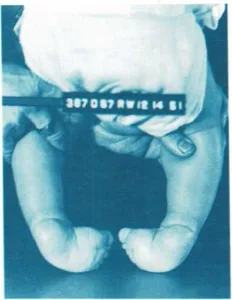Cleft lip – Clubfoot
Cleft lip is a cleft (split) in the upper lip. It is congenital
(present at birth). The cleft may be just a small notch on the lip or it
may extend to one or both sides of the nose. A cleft lip may occur by
itself or it may appear along with cleft palate or other body defects
such as deformed, additional, or missing teeth.
Doctors cannot always determine the cause of a cleft lip. Sometimes it
is inherited, but often something has happened during the course of the
mother’s pregnancy to affect the normal development of the child’s lip.
If the child has no other abnormalities, a cleft lip can be treated by
plastic surgery, usually when the baby is a few weeks old. Treatment is
more difficult if the cleft occurs on both sides of the nose, but the
defect can be corrected. Sometimes more than one operation is needed to
correct the abnormalities. If the child also has a cleft palate or other
defects, care of all the problems must be planned together.
[t.m.h.]
See also Cleft palate; Heredity
Cleft palate is an opening in the roof of the mouth that keeps the
nose and mouth from being adequately separated. The opening may be very
small, or so large that the mouth and nose are practically one cavity.
Often the cleft extends through the upper lip as well as the palate.
Sometimes cleft palate is hereditary, but often something has interfered
with normal development of the mouth before the baby was born.
An infant with cleft palate may have difficulty in nursing and may need
special feeding. Also, a child with cleft palate tends to have
middle-ear infections, and so should be watched carefully for this
complication.
Your physician may recommend surgery to correct the cleft palate, but
may delay surgery until the child is 2 years old. (See photographs on
page 205.) Or the doctor may suggest the use of a dental appliance
instead. The aim is to give the child a good appearance, to enable the
child to eat and speak normally, and to promote normal physical,
emotional, and social growth, [t.m.r.]
See also Cleft lip
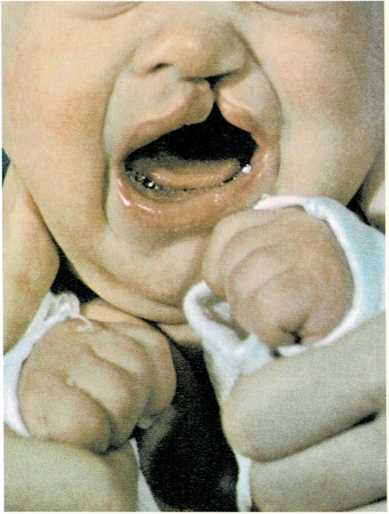
A cleft lip is a split in the child’s upper lip. It is present at
birth.
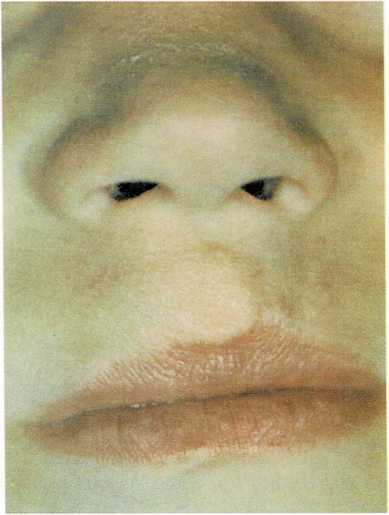
Plastic surgery is highly successful in the correction of a cleft
lip.

A cleft palate is a split in the palate (roof of the mouth). It is
present at birth.
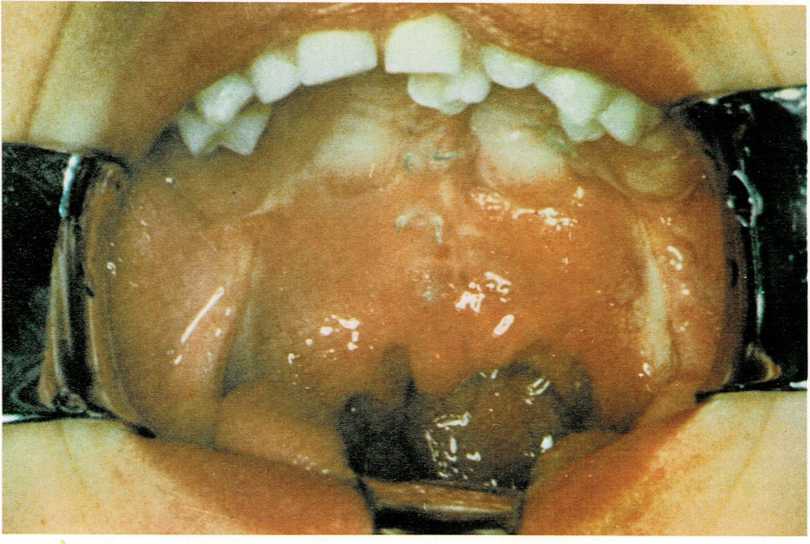
Doctors sometimes use surgery to join the two parts of a cleft
palate.
Clubfoot is the most common foot deformity a baby may be born with.
Usually, a clubfoot is twisted inward and downward, making the entire
leg resemble a club. Clubfoot tends to run in families, and occurs about
once in every 1,000 births. It is more common in boys than in girls.
Clubfoot may occur in one or both feet, and it varies in severity from a
very mild deformity requiring little treatment to a severe case
requiring extensive care, including surgery. An orthopedist (bone
specialist) usually directs the care of a child with a clubfoot.
Treatment may include stretching exercises, the use of plaster casts or
foot splints, and, later, special shoes. Severe foot deformity usually
requires surgical treatment. The best results are obtained when care is
started early, sometimes in the first week of life. When treatment is
delayed, it takes longer to correct the deformity, and the results may
not be as successful, [jj.g.]
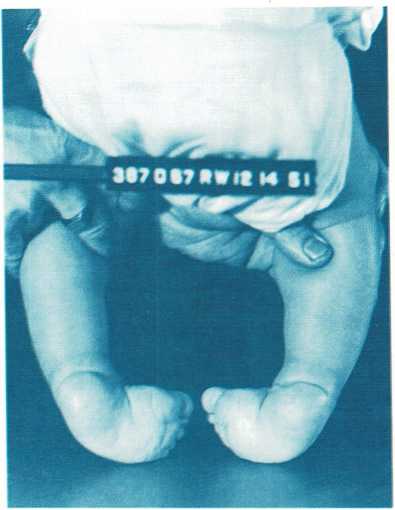
This infant was born with clubfeet. Corrective treatment was begun
before the child was a year old.

**By the time the child was 6 years old, the clubfoot condition was
corrected to an almost normal position.
Coagulation Of blood. See Blood clotting

